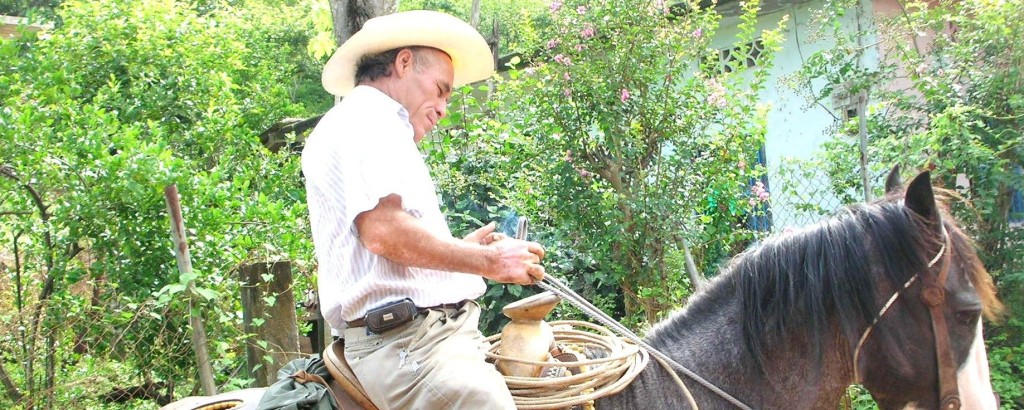“A natural medley of willows and cherry blossoms weave themselves into a brocade, the Heian-kyo” romanticises an ancient verse about Kyoto, Japan’s capital and residence of emperors between 794 and 1868. Wars and raging fires destroyed Kyoto – formerly called “Heian-Kyo”, Capital of Peace – repeatedly over the course of many centuries. Astonishingly, not so during WW II: thanks to its precious historic value, and the presence of mind of acting warlords, the city was spared the fate of being melted into contaminated grounds by a malign nuclear bomb or of being struck by hostile air raids. Other Japanese destinations were less fortunate. A wealth of cultural properties of the past like temples, shrines and other traditional structures was, thus, successfully preserved in Kyoto.
Posts about Local Traditions
The fastest Guide in all of Mexico
A Jungle Safari at Cyberspeed
Arrribaaa! The bright red jeep perfectly fits the fiery temperament of its driver. Juan virtually swathes the participants joining in the excursion into the hinterland of Puerto Vallarta in his lively personality. The wiry bundle of energy with an endearing Spanish accent and sly eyes sparkling under comb-resistant hair resembles an information automat in human form.
Kroatien. Zagreb:Lebenslust aus der Lameng
Croata – ein Schlips für Knopf und Kragen
Das hat man gern: gleich zum Auftakt eine Denksportaufgabe! Aber es stimmt: Die Krawatte ,stammt‘ aus Kroatien und heißt deshalb auch so: Croata! Dass man darauf nicht schon längst von alleine gekommen ist! Und dass Dalmatiner-Hunde nach der gleichnamigen Region im Süden des Landes benannt wurden, dürfte als deutliche schwarze Tupfen auf der Hand liegen! Und noch ein offenes Geheimnis: Kroatiens Hauptstadt Zagreb liegt wirklich nicht am Meer!
Schottland: Hello, Dolly!
Source of header photo is untraceable. Please contact the publisher, should you be the author.
Diese Schotten! Der Klischees gäbe es mehr als genug: Schotten sind geizig, essen unansehnliches Haggis, trinken Unmengen Whisky und pfeifen unaufhörlich auf dem Dudelsack. Sie gehen nicht ohne Golfschläger aus dem Haus, tragen kratzige Pullover und karierte Faltenröcke, treffen sich in Clans in Glens, tanzen den ganzen Tag Ceilidh [kay-lee] und werfen im Hochland mit Baumstämmen oder Gummistiefeln um sich. Außerdem ist ihr Glaube an böswillige Gespenster und an ein einem Dinosaurier ähnelndes Untier in einem tiefen Loch schier unausrottbar!
Südafrika/KwaZulu-Natal: Diesseits – in Afrika
Du bist ein Löwe – dies ist dein Lied
Solomon Linda stammte aus dem Zululand. Er arbeitete als Putzmann und Schallplattenverpacker bei der Gallo Record Company in Johannesburg, als er in den 1920ern die zündende Idee zu einem hitverdächtigen Song hatte. Zusammen mit seiner a cappella-Gruppe „Solomon Linda and the Evening Birds“ führte er sein Lied „Mbube“ (Löwe) fortan unzählige Male auf. Das eigentliche Stück war simpel, seine ungeheure Faszination aber machte der Hintergrund-Chor aus sonoren Männerstimmen aus. Solomons Part – heulend-jodelnd zu wehklagen – mündete schließlich in eine Melodie mit dem improvisierten Text „In the jungle, the mighty jungle, the lion sleeps tonight“. Ein Welthit war geboren! Solly bekam einen Plattenvertrag und bis 1948 verkauften sich über 100.000 Scheiben in Afrika und Großbritannien. Allerdings erhielt er dafür nur einen kleinen Obolus. Aber „Mbube“ wurde zum Inbegriff afrikanischer a cappella-Musik. Weeheeheehee-dee-heeheeheehee-wee-aweem-away…





